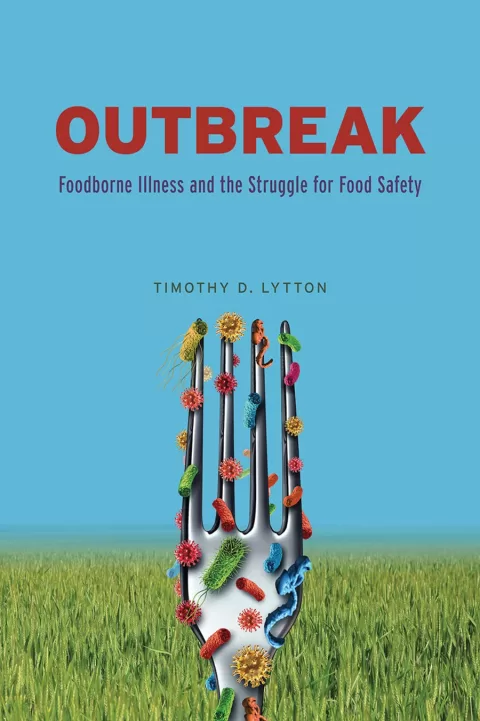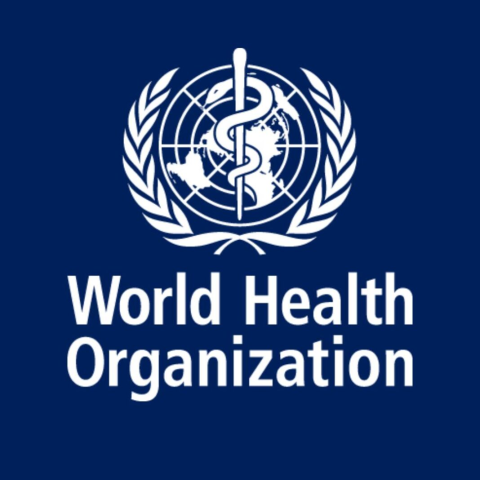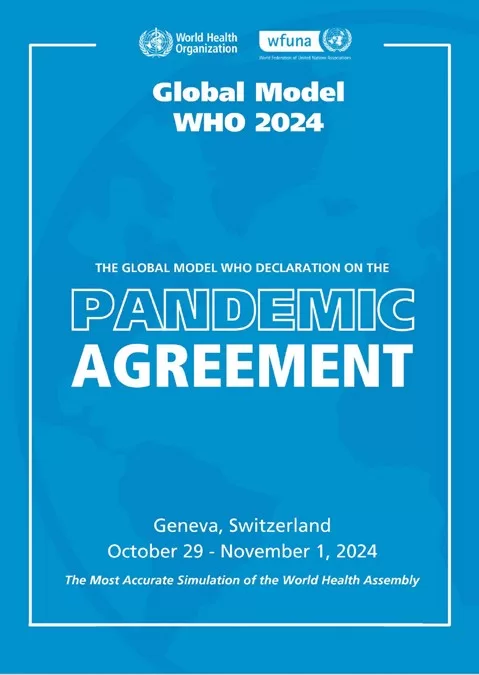Doxycycline post-exposure prophylaxis (DP) has emerged as a groundbreaking method for sexually transmitted infection (STI) prevention, significantly reducing the risk of bacterial STIs among high-risk populations. Recent research involving over 2,000 patients at the Los Angeles LGBT Center shows that this antibiotic regimen can be immensely effective in shielding individuals from STIs, with striking reductions in chlamydia and gonorrhea cases. Notably, the findings correlate with outcomes from the renowned DoxyPEP trial, highlighting the significant impact of doxycycline in effective STI treatment. Since its introduction as a preventive measure, DP has become crucial in the fight against STIs, offering hope for better public health outcomes. By integrating DP into healthcare strategies, we can promote bacterial STI reduction within communities, paving the way for enhanced sexual health awareness and intervention.
The concept of post-exposure prophylaxis using doxycycline reflects a promising advance in STI prevention strategies, particularly for those most at risk. This innovative approach, often referred to as DP for STIs, employs an antibiotic regimen to lower the likelihood of contracting bacterial infections after potential exposure. The recent accolades from studies such as the DoxyPEP trial underline its effectiveness in diminishing STI rates, fostering a transformative narrative in sexual health. As communities strive for comprehensive sexual health solutions, this method offers a potential reduction in STI incidences among populations with known vulnerabilities. The intersection of early intervention and effective STI treatments like doxycycline presents a compelling case for further widespread implementation.
The Benefits of Doxycycline Post-Exposure Prophylaxis (DoxyPEP)
Doxycycline post-exposure prophylaxis (DoxyPEP) has emerged as a vital strategy in the realm of STI prevention, particularly for populations at high risk. In a substantial study that tracked over 2,000 patients, the administration of DoxyPEP showcased a remarkable effectiveness in curtailing the transmission of sexually transmitted infections (STIs). Patients utilizing DoxyPEP reported significant reductions in syphilis, chlamydia, and gonorrhea infections, demonstrating its transformative impact on public health strategies targeting STI reduction. By proactively prescribing DoxyPEP, healthcare providers are reinforcing the importance of timely intervention and showcasing an innovative approach to STI management and treatment in clinical settings.
With the Centers for Disease Control and Prevention (CDC) endorsing DoxyPEP for specific demographics, primarily gay men and transgender women with a history of STIs, the conversation around bacterial STI prevention is evolving. The high rates of STI reduction observed during the study period underline the potential of DoxyPEP to serve as an effective treatment option. Patients no longer need to approach STI prevention reactively; instead, DoxyPEP empowers them to take control of their sexual health proactively.
Furthermore, the DoxyPEP trial results emphasize the necessity of incorporating evidence-based practices into routine care for high-risk populations. The overall results revealed significant declines—chlamydia cases dropped by 89.7% and syphilis by 86.4% among DoxyPEP users. These impressive outcomes not only signify the efficacy of DoxyPEP in real-world scenarios but also highlight its potential as a model for future STI prevention strategies. As healthcare providers embrace these findings, the focus can shift toward systematic integration of DoxyPEP into standard treatment protocols, thus enhancing access to effective STI prevention methods.
Understanding the DoxyPEP Trial and Its Impact
The DoxyPEP trial conducted in major cities like San Francisco and Seattle significantly influenced contemporary understanding of effective STI treatment. This trial included robust clinical evaluations that corroborated the real-world effectiveness of doxycycline as prophylactic treatment against STIs. These findings are critical not only for individual patient care but also for broader public health policies aimed at reducing the incidence of STIs in communities plagued by these infections. Following the DoxyPEP trial, the CDC recommended its use, underscoring its role in the fight against the STI epidemic.
The implications of the DoxyPEP trial extend beyond just numbers; they invoke a paradigm shift in how societies perceive STI prevention methods. The trial demonstrated that with proper guidance and accessibility of DoxyPEP, communities can witness a marked decline in bacterial STIs. By acknowledging this powerful evidence, healthcare stakeholders can advocate with confidence for DoxyPEP applications across various demographics that are disproportionately affected by STIs, thus spearheading a concerted effort for improved sexual health education and STI prevention effectiveness.
The Role of Patient Demographics in STI Prevention
Understanding patient demographics plays a crucial role in tailoring effective STI prevention strategies, including the administration of doxycycline post-exposure prophylaxis (DoxyPEP). In the recent study focusing on DoxyPEP usage, it was revealed that a significant portion of the participants were gay or bisexual men aged between 31 and 40. This demographic insight underscores the need for focused outreach and education regarding STI prevention in specific high-risk groups. Additionally, with over 85% of participants identifying as gay or bisexual men, healthcare providers can better strategize their prevention approaches, ensuring that information about preventive measures like DoxyPEP reaches those most at risk.
Moreover, the high prevalence of previous STI diagnoses among study participants emphasizes the necessity for continuous monitoring and patient education regarding STI risks. As health practitioners gain a deeper understanding of the demographics related to bacterial STI transmission, they can implement more robust personalized health interventions. This aspect is crucial in creating effective STI prevention initiatives that resonate with the lifestyle and challenges faced by different groups, fostering an environment where informed choices lead to healthier sexual practices and ultimately, a reduction in STI rates.
Efficacy of STI Testing Post-Doxycycline Administration
The efficacy of STI testing following the use of doxycycline post-exposure prophylaxis (DoxyPEP) plays a significant role in ensuring the continued health and safety of individuals at risk of infections. One of the strengths of DoxyPEP lies in its ability to be integrated with regular STI testing, allowing healthcare providers to monitor and manage the sexual health of patients effectively. The study found a notable decline in STI cases among those who consistently used DoxyPEP, further reinforcing the importance of concurrent STI testing to assess the overall effectiveness of prevention strategies and treatment options available to patients.
Integrating STI testing with DoxyPEP enhances the opportunity for early detection and treatment, promoting a comprehensive approach to managing sexual health. This dual strategy not only serves to affirm the positive effects of DoxyPEP in preventing bacterial STIs but also provides valuable data on trends and patterns in STI incidence within specific populations, thereby informing future research and public health initiatives. Encouraging patients to engage in regular testing creates a proactive culture of sexual health awareness, which can significantly impact overall STI reduction goals.
Navigating Concerns About Long-Term DoxyPEP Use
While the short-term effectiveness of doxycycline post-exposure prophylaxis (DoxyPEP) has been well established, understanding the potential long-term consequences of its use remains a critical area of inquiry. As noted by researchers, there are significant questions concerning the long-term impact of consistent DoxyPEP administration on patient health and STI dynamics across populations. Any thorough examination must address various aspects, including the potential for antibiotic resistance and the overall effectiveness in an evolving STI landscape. This underscores the importance of continued research and monitoring in clinical practices.
Healthcare providers must weigh the benefits of immediate STI prevention against possible long-term health ramifications associated with the ongoing use of DoxyPEP. By developing structured monitoring and feedback systems, clinical stakeholders can evaluate patient responses and adapt strategies accordingly. Additionally, these observations will be vital in refining best practices and addressing any unexpected challenges that arise from prolonged DoxyPEP use, ultimately safeguarding patient health while striving for effective STI reduction.
Improving Access to DoxyPEP for High-Risk Populations
Enhancing access to doxycycline post-exposure prophylaxis (DoxyPEP) is vital for effective STI prevention, particularly among marginalized populations that are disproportionately affected by STIs. Data from the recent study highlights that significant portions of high-risk individuals, including gay men and transgender women, have been less likely to receive comprehensive sexual health education and necessary resources. Addressing systemic barriers to access—such as lack of awareness, stigma, and insufficient healthcare infrastructure—is essential for the widespread adoption of DoxyPEP and similar preventive measures.
Outreach programs aimed at educating high-risk populations about the efficacy of DoxyPEP and facilitating access to necessary resources can significantly bolster STI prevention efforts. Collaborations between community organizations, healthcare providers, and public health officials can pave the way for initiatives that promote awareness and distribution of this essential prophylactic tool. By bridging the gap between vulnerable populations and healthcare services, we can empower individuals to take charge of their sexual health and reduce the incidence of STIs effectively.
Creating a Culture of Sexual Health Awareness and Education
Establishing a robust culture of sexual health awareness and education is paramount in combating the prevalence of STIs, particularly as new tools like doxycycline post-exposure prophylaxis (DoxyPEP) become available. Educational initiatives should encompass comprehensive details about STIs, their transmission, and prevention strategies, including safe practices and DoxyPEP usage. The overriding goal is to demystify STIs and create an informed community that recognizes the importance of taking proactive steps toward their sexual health.
Schools, healthcare institutions, and advocacy groups can play an instrumental role in fostering this culture by providing accessible, accurate information and creating safe spaces for discussions around sexual health. Utilizing various mediums such as workshops, informational sessions, and social media campaigns, these organizations can engage with diverse audiences to highlight the importance of regular testing and the potential of DoxyPEP in STI prevention. Laying the foundation for a well-informed community sets a precedent for healthier sexual behaviors and ultimately contributes to lowering STI incidence rates.
Future Directions in STI Prevention and Treatment
As public health experts and researchers evaluate the promising findings surrounding doxycycline post-exposure prophylaxis (DoxyPEP), it leads to exciting possibilities for future directions in STI prevention and treatment strategies. With evidence indicating its effectiveness in dramatically lowering STI rates in high-risk populations, the focus can now shift towards broadening the scope of its application across different demographics. Future research could explore the viability and safety of DoxyPEP in various settings, including its potential impact on the heterosexual population and its integration with other preventive measures, such as PrEP for HIV.
Moreover, the findings urge healthcare systems to innovate in health policy frameworks and implement evidence-driven guidelines that promote the optimal use of DoxyPEP. As we cultivate a landscape where sexual health resources are readily accessible and tailored to diverse populations, we inch closer to the reality of reducing STIs to unprecedented levels. Continually assessing the outcomes and refining strategies based on patient feedback and health data will remain essential in navigating this evolving arena of STI treatment and prevention.
Frequently Asked Questions
What is doxycycline post-exposure prophylaxis (DP) for STI prevention?
Doxycycline post-exposure prophylaxis (DP) is a preventive treatment involving the use of doxycycline after potential exposure to sexually transmitted infections (STIs). It has shown effectiveness in reducing the rates of bacterial STIs, such as syphilis, chlamydia, and gonorrhea, particularly among populations with higher risk.
How effective is doxycycline post-exposure prophylaxis in reducing bacterial STIs?
Research from the DoxyPEP trial and a recent study involving over 2,000 patients demonstrated that doxycycline post-exposure prophylaxis significantly reduced syphilis cases by 86.4%, chlamydia by 89.7%, and gonorrhea by 54.7% among those using the treatment for six months or more.
Who should consider doxycycline post-exposure prophylaxis for STI reduction?
Doxycycline post-exposure prophylaxis is primarily recommended for gay men and transgender women with a history of STIs, especially those at higher risk of exposure. The Centers for Disease Control and Prevention endorsed its use based on studies like the DoxyPEP trial.
What were the demographics of patients using doxycycline post-exposure prophylaxis in recent studies?
The study conducted at the Los Angeles LGBT Center reported that nearly half of the patients using doxycycline post-exposure prophylaxis were between 31 and 40 years old. The majority identified as white (55.9%) and 85.2% were gay or bisexual men, highlighting a specific demographic at risk for STIs.
What findings link doxycycline post-exposure prophylaxis to STI prevention in clinical settings?
Findings from a comprehensive study of doxycycline post-exposure prophylaxis indicate that real-world efficacy aligns with previous clinical trials, including the DoxyPEP trial, demonstrating its importance as a tool for STI prevention and the need for ongoing analysis of its usage patterns.
Are there any concerns regarding the long-term use of doxycycline post-exposure prophylaxis?
While doxycycline post-exposure prophylaxis has proven effective for STI prevention, researchers urge caution regarding potential trade-offs of consistent use. Ongoing studies are essential to understand the long-term implications and ensure optimal implementation and minimize adverse outcomes.
| Key Point | Details |
|---|---|
| Study Overview | Analysis of 2,083 patients prescribed doxycycline post-exposure prophylaxis (DP) at the Los Angeles LGBT Center from April 2019 to July 2024. |
| Patient Demographics | 48.1% aged 31-40, 55.9% white, 85.2% gay or bisexual men, 41.4% with prior STI. |
| Prescription Trends | 24.5% received DP prescriptions between January 1 and April 15, 2024. |
| Efficacy Results | Among 1,115 users for 6 months or more: syphilis decreased by 86.4%, chlamydia by 89.7%, and gonorrhea by 54.7%. |
| Comparison to Trials | Efficacy aligns with findings from the DoxyPEP trial and other studies that led to CDC recommendations. |
| Future Research Needs | Need to examine usage patterns and potential trade-offs of consistent DP use to minimize adverse outcomes. |
Summary
Doxycycline post-exposure prophylaxis (DP) has been shown to significantly reduce the incidence of sexually transmitted infections, according to recent findings from a study in Los Angeles. This research indicates that DP usage is beneficial, but future studies must address the trade-offs and long-term effects of its consistent use. The positive outcomes from this study highlight the importance of DP as a preventative tool against STIs in high-risk populations.
The content provided on this blog (e.g., symptom descriptions, health tips, or general advice) is for informational purposes only and is not a substitute for professional medical advice, diagnosis, or treatment. Always seek the guidance of your physician or other qualified healthcare provider with any questions you may have regarding a medical condition. Never disregard professional medical advice or delay seeking it because of something you have read on this website. If you believe you may have a medical emergency, call your doctor or emergency services immediately. Reliance on any information provided by this blog is solely at your own risk.








